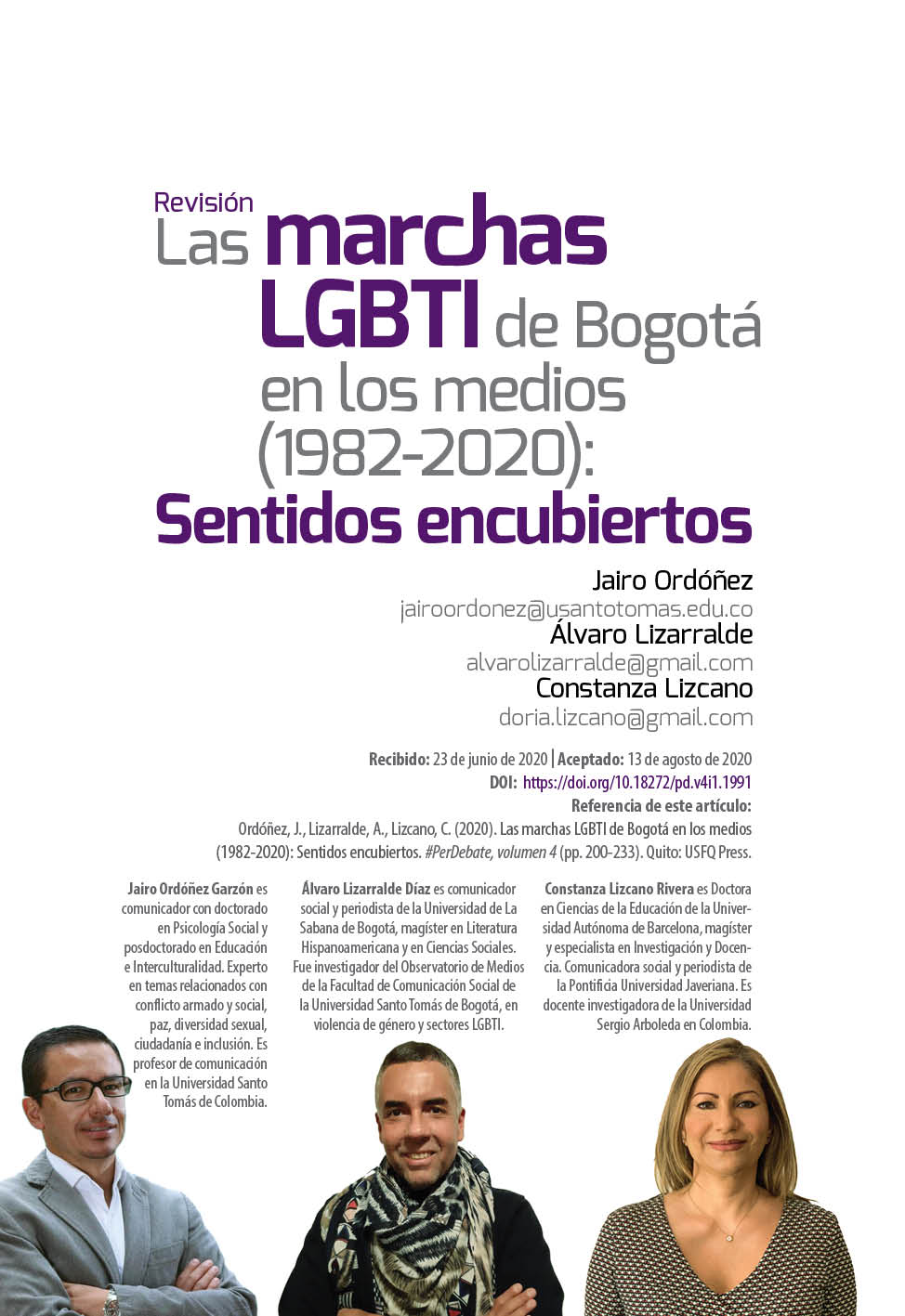The LGBTI Marches of Bogotá in the Media (1982-2020) Covert Senses
Main Article Content
Abstract
This research analyzed the coverage of the Marches for Sexual and Gender Diversity, formerly known as Gay Pride Marches, in Bogotá, based on ten representative media from this city, some of them national in scope. The objective was to determine how the marches were recorded by journalists, both in the general mass media and in those specialized in LGBTI issues, understanding that media are catalysts for stereotypes and prejudices in society. Thus, articles between 1982 and 2018 were analyzed (in 2019 the march was suspended due to a storm and in 2020 due to COVID-19), in order to identify modes, trends and changes in the way of reporting. The method for this research was mainly content analysis, although discourse analysis and critical discourse analysis were also implemented. The approach was quantitative and descriptive in scope. As relevant conclusions, characteristics in journalistic coverage were identified, especially in traditional media, such as misinformation, incomplete information, an elitist approach, limited coverage and approach, which implies an
invisibility and depoliticization of a march that is represented as a mere show. On the other hand, a more in-depth coverage is observed in the medium specialized in LGBTI issues. This research was carried out with resources provided by Universidad Santo Tomás in Colombia.
Keywords:
LGBTI, diversity marches, Mass Media, coverage, Bogota,
Article Details
How to Cite
Ordóñez Garzón, J. E., Lizarralde Díaz, Álvaro, & Lizcano Rivera, C. (2020). The LGBTI Marches of Bogotá in the Media (1982-2020): Covert Senses. #PerDebate, 4(1), 200–233. https://doi.org/10.18272/pd.v4i1.1991

